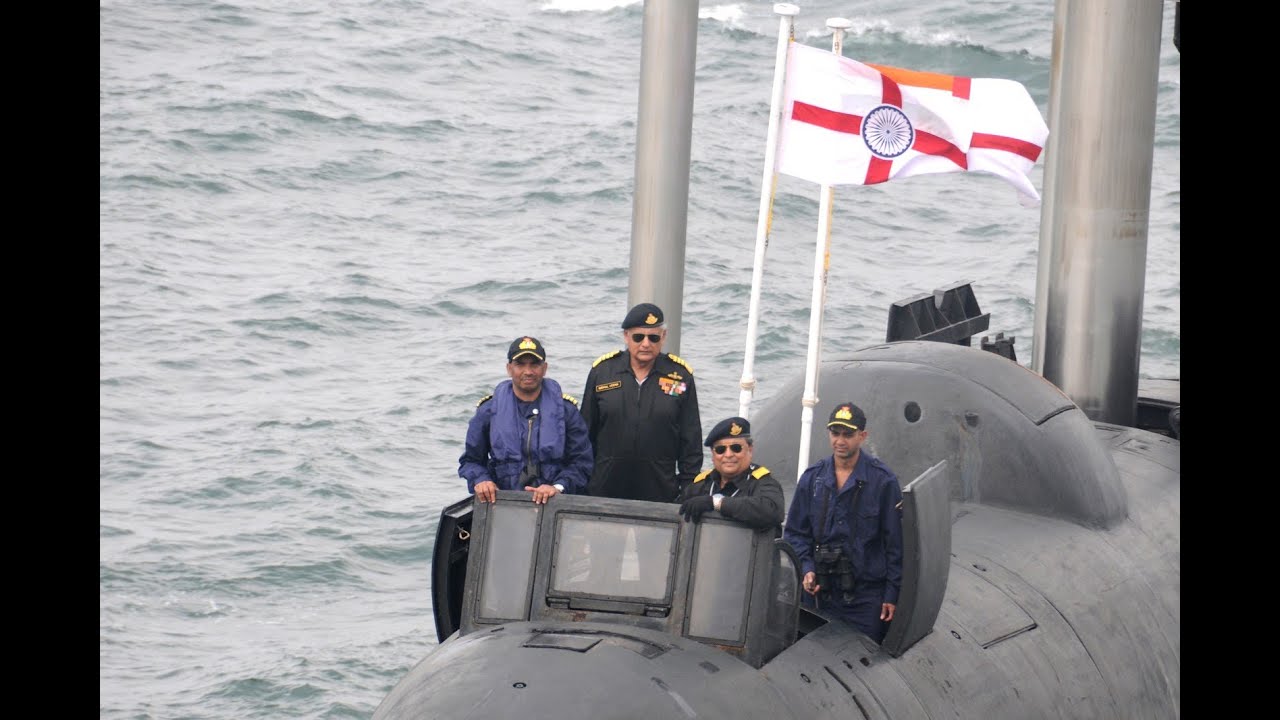The Russian Navy is set to dismantle the damaged Project 971U “Shchuka-B” SSN (nuclear-powered submarine) leased to the Indian Navy (IN) as INS Chakra, Tass reported.
Indian Navy’s Indigenous Aircraft Carrier – INS Vikrant – Achieves Full Operational Status; India Joins ‘Elite Club’ Of Nations
“For financial reasons, the Main Command of the Navy considers it inappropriate to repair and modernize the Nerpa, located at one of the shipyards near Vladivostok, and proposes to dispose of it,” the agency’s interlocutor said.
The Nerpa was first damaged while on lease with the Indian Navy on October 3, 2017.
The then-Indian Chief of Naval Staff (CNS), Admiral Sunil Lanba, confirmed the accident on December 1, 2017, when speaking at a presser ahead of Navy Day that year. He said, “The Chakra has suffered damage to her sonar dome. Two [hull] panels have been dislodged”
INS Chakra was based at INS Virbahu, the submarine base in Visakhapatnam, in Eastern Naval Command.
The accident reportedly occurred when the submarine was entering the harbor in Visakhapatnam. Unnamed sources told The Hindu that the sonar dome in the submarine’s bow just below the torpedo tubes was damaged.
Russia reportedly quoted US$20 million for repairing INS Chakra’s sonar dome. The cost included fabricating the replacement panels in their facility and shipping them to India.
According to reports, after the IAF struck Balakot in Pakistan in the early morning hours of February 26, 2019, the Indian Navy sent INS Chakra, along with INS Kalvari, to search for the Pakistani submarine PNS Saad, which was believed to be deployed at sea. If true, INS Chakra was operationally deployed after successful repairs.
Second Accident?
According to the Tass report, in April 2020, a high-pressure air cylinder exploded on board the submarine, damaging both hulls. Electronic weapons and sonar equipment were also damaged.
Following the explosion, India decided to end the submarine lease ahead of schedule. Indian specialists carried out emergency repairs on both hulls, and in the summer of 2021, Chakra-2, accompanied by ships of the Russian Pacific Fleet, made a surface transition from India to Vladivostok.

Nerpa History
Construction of the 8,140-tonne Nerpa nuclear attack submarine started in 1991 at Amur Shipyard but was suspended for over a decade due to lack of funding.
In 2000, India and Russia signed an agreement for the long-term lease of the K-152 Nerpa.
At the time of the agreement, the Nerpa was 86.5% technically complete. It was envisaged that a second submarine of the same type would be completed and leased to India subsequently.
Chakra Was Accident-Prone
The Nerpa started shipyard sea trials in Russia on October 27, 2008. On November 8, the submarine was involved in a severe accident while operating with the Russian Pacific Fleet, in which 20 people were killed and another 21 injured.
The fire protection system of the submarine was accidentally triggered, resulting in the release of poisonous Freon gas.
The accident occurred with 81 service personnel on board and did not affect the submarine reactor.
A board investigating the accident concluded that the tragedy was caused by the mishandling of a temperature sensor on board, which led to deadly Freon gas being released.
Submariner Dmitry Grobov was charged with “involuntary manslaughter” for entering the wrong temperature data for the submarine’s living quarters, which caused the fire suppression system to release the Freon gas.
India’s SSN Program Yet To Make Headway
Expectations that India would lease a second SSN from Russia have not materialized. India’s experience with INS Chakra and global geopolitical instability are likely contributing factors. Also, in early 2015, the Indian government approved the construction of six SSNs for the Indian Navy under Project 78A.
The six SSNs will be built at the secretive ship-building center (SBC) at Visakhapatnam, which produced INS Arihant and is now making two follow-up class SSBNs. (INS Aridaman is the second boat of the class.)
In February 2020, an Economic Times report said the Indian Navy had completed the initial design phase of the submarine.
Government clearance is now being sought for the Directorate of Naval Design (Submarine Design Group) to start the more complex detailed design process with assistance from DRDO. The first of the six boats could roll out in a decade if things go as planned.
Joint SSN Development With Foreign Partner
Past press reports have alluded to the joint development of SSNs with a foreign vendor to address the immediate operational requirements of the Indian Navy.
In 2015, India held preliminary discussions with DCNS (later rechristened as Naval Group) of France and a leading US conglomerate for assistance in designing and developing its SSN class.
In July 2018, Sputnik reported that India and Russia had started discussing joint construction and development of a nuclear submarine at a cost-effective rate at an Indian shipyard.
Going by the proposal, the two countries intend to develop a prototype for under US$200 million. The Russian firm would transfer the technical know-how and related documents to the Indian shipyard.
In September 2021, there was speculation that India and France had reached an apex-level agreement to cooperate in both military-technical and military-industrial matters related to Project-78A.
Under the agreement, France’s Naval Group and Thales will help India’s Larsen & Tuobro to build double-hulled SSNs with 4,800 tonnes displacement.
Conclusion
The Indian Navy has leased an SSN twice — from the Soviet Union from 1988 to 1992 and Russia from 2012 to 2021 — but has been unable to leverage the operational experience gained.
Operating a domestically built SSN continues to be a distant dream for the Indian Navy.
- Vijainder K Thakur is a retired IAF Jaguar pilot. He is also an author, software architect, entrepreneur, and military analyst. VIEWS PERSONAL
- Follow the author @vkthakur